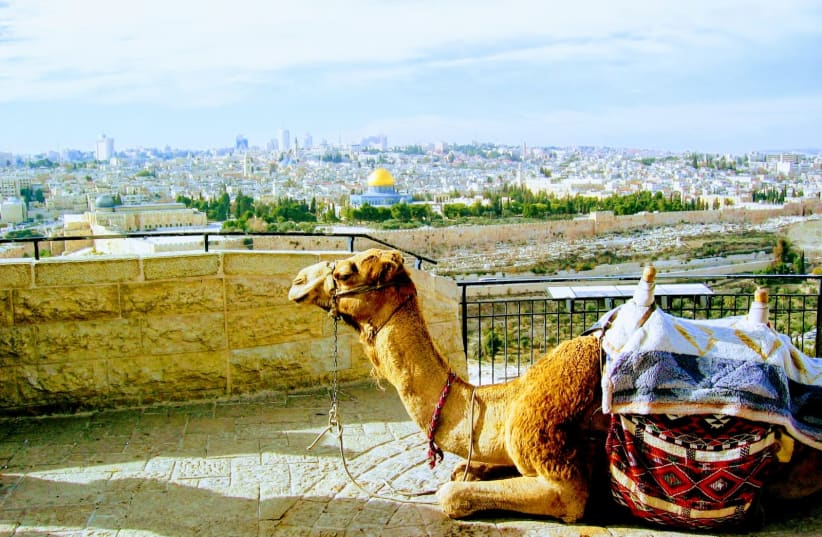The Mount of Olives and the Kidron Valley below it sit at the crossroads of the world’s three monotheistic religions. Jews, Christians and Muslims “all believe that the end of days is going to happen right here,” said Jerusalem-based tour guide Kobi Cooper.
Situated 800 meters above sea level, several Biblical accounts are believed to have occurred on the mountain. And it has been used as a place of spirituality and burial going back to the time of Abraham, the father of all three monotheistic faiths.
There is a Jewish midrash or tale about Noah’s Ark ending up on top of the mountain, Cooper said. In 2 Samuel, King David fled from Absalom through the Kidron Valley and over the Mount of Olives on his way to the east. This story is in 2 Samuel 15:13-16:4 with the Mount of Olives — mentioned by name as Maaleh HaZeytim.
In First Temple times the “goat of Azazel” — the scapegoat — was taken through the mountain on the way out to the wilderness on Yom Kippur to atone for the sins of Israel, according to Leviticus 16. And in Second Temple times, the Red Heifer was burnt in the area, although only six times in 200 years.
“Two more were burnt but were deemed unfit for use,” Cooper said. “The first and only other time it was done was by Moses in the desert. It will be done for a tenth time, it is said, by the Messiah. Its ashes were put in a vessel with water and used for purifying people who touched a corpse, as stated in Numbers 19:1-22.”
And according to the vision of the prophet Zechariah, the end of days will be announced by God on the Mount of Olives.
For Christians, said Cooper, the Mount of Olives served as Jesus’ base during the “main events” — the last week of Jesus’ life: his arrival in Jerusalem and his shuttling between Jerusalem during the day to preach and Bethany/Beit Pagi at night, the Last Supper, the betrayal, his crucifixion and resurrection.”
At its peak during Byzantine times, there were two dozen Christian churches and monasteries on the mountain.
“It was essentially a city outside a city,” Cooper explained.
For Jews, it is the burial ground for some of the Bible’s most important prophets.
Cooper said that Jewish folklore from the Middle Ages attributes the Mount of Olives as the burial site of the prophets Haggai and Malachi, as well as the prophet Isaiah. It also houses some 70,000 to 100,000 other graves, making it the largest cemetery in Israel. These graves include the inhabitants of the Jewish Quarter killed in 1948.
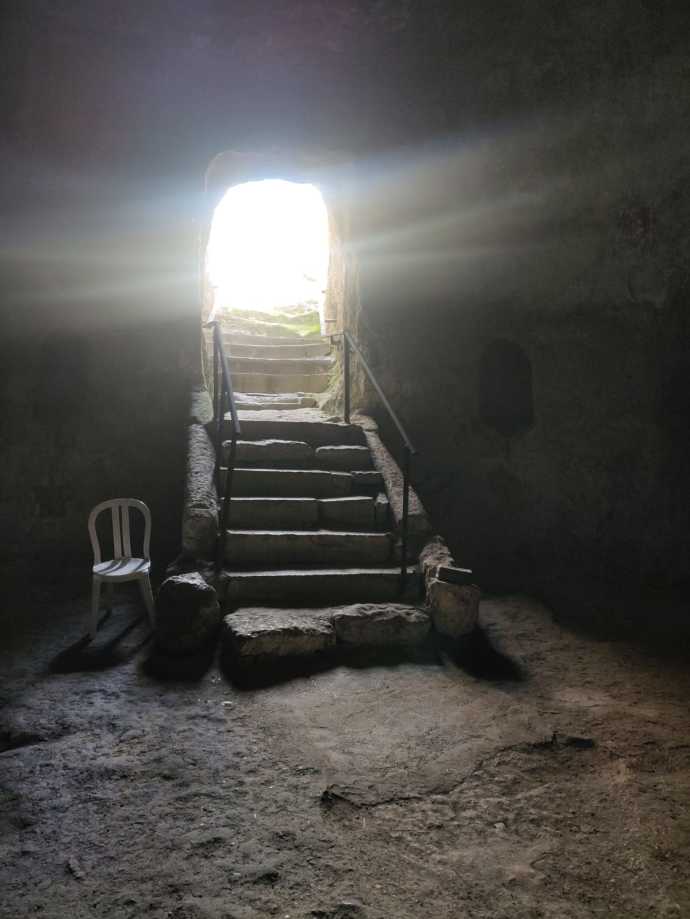

“Today it’s often the rich and famous who get buried here — since they can afford the front row seats for the coming of the Messiah,” Cooper quipped. "It is the one place in the world that everyone is dying to get into."
Among the tombs are that of Nobel Prize for Literature winner Shai Agnon and former Prime Minister Menachem Begin.


In Arabic, the Mount of Olives is called “Al-Tur,” which means “the mountain.”
Why call the Mount of Olives “the mountain” and not the Temple Mount?
“Possibly it evolved over the years from the Arabic word Al-Tuwa, meaning the border,” Cooper explained. “These words sound similar in Arabic. And the Mount of Olives is the border between city and desert, nomadic and urban,” he said.
Ibrahim Ghannan, a Muslim resident of the Mount of Olives, said that he and his family have been living there since the time of Saladin, the Muslim sultan of Egypt and Syria (1137-93).
“There is something special about living up here on this mountain with its churches, mosques and cemeteries - graves belonging to Jews, Muslims and Christians,” he told The Jerusalem Post.
Looking over the mountain
Standing on the Mount of Olives and looking East and West beyond the mountain, one can connect the dots of ancient and modern Jerusalem.
“Looking out to the east, we can see a new Arab village post-1967— which was made from refugees from East Jerusalem including those removed from the Jewish Quarter,” Cooper explained atop one of the mountain’s most popular lookouts. “The municipal borders of Jerusalem do not include this village — the road ends it. In fact, many of the buildings are uninhabited with people waiting for future political developments.
“From up top on Augusta Victoria we can see the villages to the south, such as Azariya, Beit Pagi and Abu Dis,” he continued. “In the distance we can see the red-roofed houses of Maale Adumim. Across the hill summits to the left we can see the village of Issawiya. The area in between is designated E1 by the Israeli government, who plans to connect Maale Adumim to Jerusalem — and as such stop the Arabs from connecting their villages to Jerusalem.”
And one can also see the ancient village of Anatot, Cooper said, which is the birthplace of the prophet Jeremiah and where he was told to buy land despite the fact that the Jews were going to exile, prophesying the return of Jews to the Holy Land.
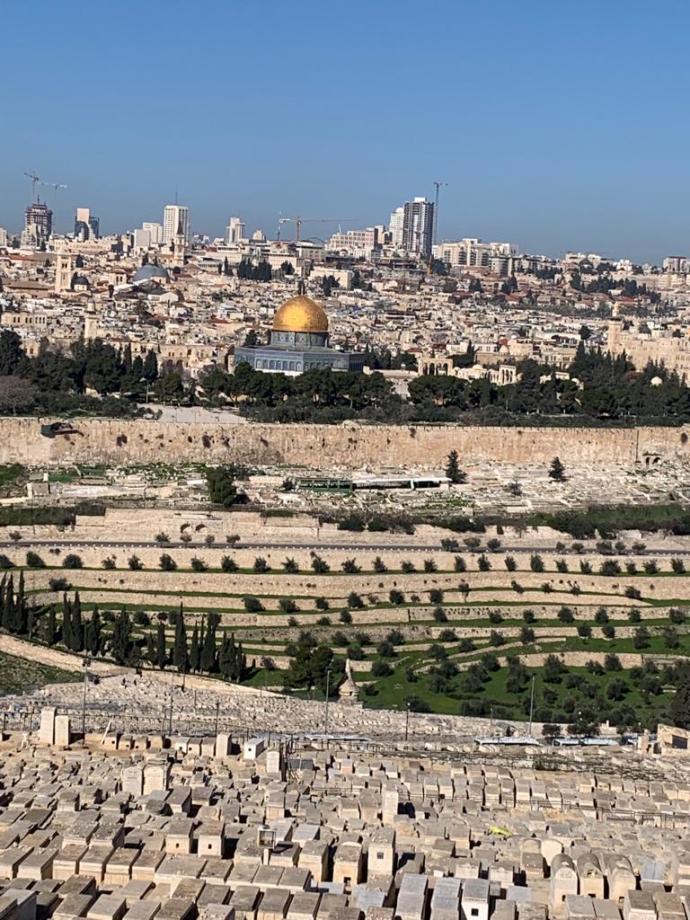

Looking to the west, you see the Dome of the Rock, which marks the ascension of Mohammed to heaven; the Church of the Holy Sepulchre where most Christians mark the story of the crucifixion and resurrection of Jesus; and the Church of the Redeemer, which is the closest Protestant church to that site.
And down below one sees the Kidron Valley, also known as the Valley of Jehoshaphat — ”God will Judge Valley.”
“This is where all three religions have beliefs relating to the end of days — from God’s judgment to resurrection to the coming of the Messiah,” Cooper said.
“One can divide the city into three sections from the Mount of Olives: We have the Old City right in front of us. This represents the past. We have the New City out on the skyline to the north and west of the Old City. This represents the present. Below us is the Kidron Valley. This is the future.
"In death, as in life, everything is always about location, location, location," Cooper concluded with a smile.
Christian Holy Sites
As noted, there are dozens of Christian holy sites atop the Mount of Olives. On a short tour, Cooper said, there are certain ones that cannot be missed. He starts with the Chapel of the Ascension:


“We are standing at the original place of a Byzantine chapel built about 50 years after the Church of the Holy Sepulchre by Poemenia, a pious noblewoman,” Cooper explained. “We can see part of the octagonal wall of the original church. This is the first place marking the ascension of Jesus.
“It was probably destroyed in 614 by the Persians and then built again in the 7th Century by Abbot Modestus — later patriarch of Jerusalem — before falling into ruin,” he continued. “The Crusaders rebuilt it and put a small chapel in the middle, which was open to the sky. It’s the place of ascension — Jesus needed a place to go up.
“In the middle we see columns with capitals and arches that are Crusader. The capitals have eagle heads with the body and tail of a lion and are typical of things in Europe at this time, in fact they are thought to be the work of French stone masons. The columns are similar to the ones at the Church of the Holy Sepulchre and the site of the Last Supper. It’s not as much a church as an idicula — a small temple or shrine.
“Yet somebody blocked it up and gave it a dome.”
Who did that?
Cooper said it was Salah al-Din who added these things after taking Jerusalem.
Pater Noster Church
First called the Eleona, this is one of the earliest places built by Helena, along with the Church of the Holy Sepulchre and the Church of the Nativity. It was established to commemorate the site where Jesus told Peter, James, John and Andrew about the end of days, which according to Mark 13:3 took place on the Mount of Olives.
“When the Christians returned in the 19th Century, the Princess de la Tour d’Auvergne bought the place and built a church next to the ruined Eleona. A Carmelite convent was built on adjacent land,” Cooper said. “In 1910-1911, excavations here found even more of Eleona's remains. People bought tablets at the church on which they had the Our Father prayer written in different languages — there are over 180 now.”
Through the courtyard is a red door where the tomb of the princess Aurelie de Bossi can be found — her bones reinterred at the church in 1957. Above her is a vase with the heart of her father.
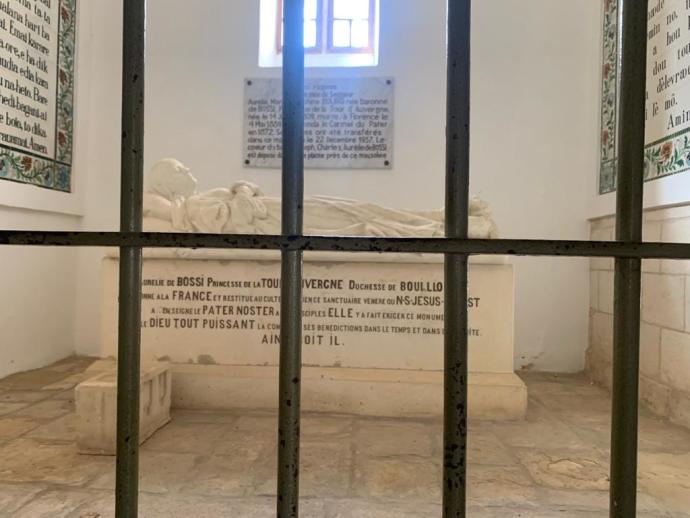

“We often talk about people leaving their hearts somewhere,” Cooper quipped. “This guy literally did it.”
Dominus Flevit
Dominus Flevit translates to “The Lord Wept,” which Cooper said was identified by the Franciscans as the site of Jesus’ arrival in Jerusalem as described in Luke 19:41-44. Here, he is thought to have wept over the future of the city. Because of this, the structure was built to resemble a teardrop.


“Generally, the apse of a church faces to the east. In fact, when we enter, we can see the Byzantine apse facing east,” Cooper said. However, the church’s Italian designer thought it would be a shame to block the view of the Old City.
“Keeping in mind that the church was built to commemorate Jesus’ weeping over Jerusalem, he thought it best to buck tradition and place the altar to the west where one can have a view over Jerusalem,” Cooper noted. “Inside we can also see mosaics that are Byzantine but partly reconstructed. We can also see the 14 little crosses inside signifying the Stations of the Cross and reminding us that this is a Catholic site, despite the fact that the actual Via Dolorosa is viewable from the window itself.”
Garden of Gethsemane & The Church of All Nations
The highlight of the Mount of Olives is the Garden of Gethsemane, one of the few spots on the mountain where one can actually see olive trees. There are eight incredibly old ones.
“The local tradition is that they are 2,000 years old, though everyone knows this is not true,” according to Cooper.
He noted that there was testing on the trees and found them to be from the Crusader period, almost 1,000 years ago.
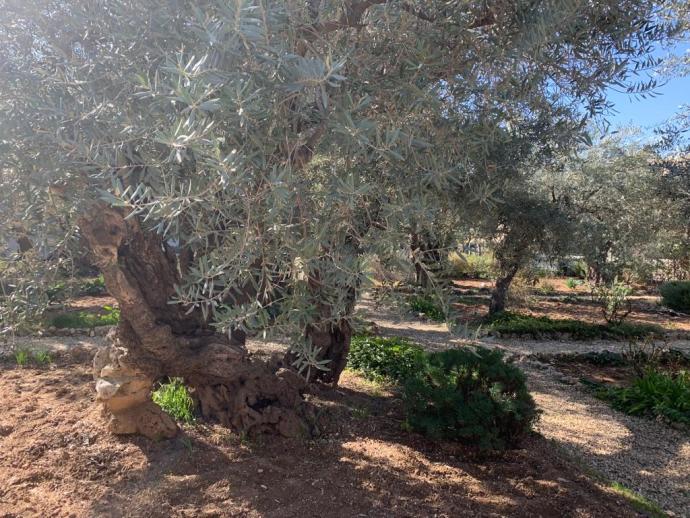

Several churches were built, destroyed and rebuilt alongside the garden. Currently, the Church of All Nations stands there. It is named as such because nations from all over the world donated money to build it.
Cooper explained that the name also invokes the words of the prophet Isaiah who said, “My house will be a house of prayer for all nations,” referring to the Temple.
The designer, Italian architect Antonio Barluzzi, followed the outlines of the old Byzantinechurch that was found in the excavations. He also preserved the original mosaics and expanded them into a modern mosaic floor.
“Before the apse we see the rock of the agony — the stone where Jesus prayed and sweated blood. It is very dark inside intended to give worshipers that they are reliving the story, which took place at night,” Cooper noted. “Outside, the main feature is Jesus in the bottom middle wearing red, which always signifies agony or suffering.”
Modern Mount of Olives Controversy
The Mount of Olives recently made headlines after Israel’s Nature and Parks Authority (INPA) announced plans to expand the Jerusalem Walls National Park’s borders to encompass Christian holy sites in areas of the Kidron and Ben Hinnom Valleys, in addition to the Mount of Olives.
Christian officials from all major local denominations pushed back against the plans, sending a harsh letter to Environmental Protection Minister Tamar Zandberg accusing Israel of trying to “confiscate and nationalize one of the holiest sites for Christianity and alter its nature.”
The churches said in their letter that “under the guise of protecting green spaces, the plan appears to serve an ideological agenda that denies the status and rights of Christians in Jerusalem.”
The INPA told the Post that “The site has long been zoned for preservation and not for construction. For that reason, the INPA initiated a number of years ago a project for a National Park at this site due to its great significance, and to provide it with official protection status in order to strengthen its level of preservation.
“According to Israeli law, declaration of any land as a National Park does not change its ownership status, as all private lands within a National Park remain in their owner’s possession.”
Nonetheless, the INPA said it would not move forward with the project due to church opposition.
“The INPA does not at this time have any intention to advance this project in the planning boards, and the project will not be brought up for discussion without dialogue and interchange with all appropriate stakeholders, including the local religious bodies, regarding the best way forward to preserve this unique site,” it told the Post in a statement.
Mount of Olives activist Josh Wander expressed frustration at the delay, highlighting that the INPA’s project focused on “neglected parts of the mountain.”
“The project could have made these areas into beautiful, scenic parks that could be used by tourists and residents alike,” he told the Post. “Instead, it was made into something controversial and now people believe this was an attack on the churches. Nothing was going to be destroyed on the Mount of Olives.”
